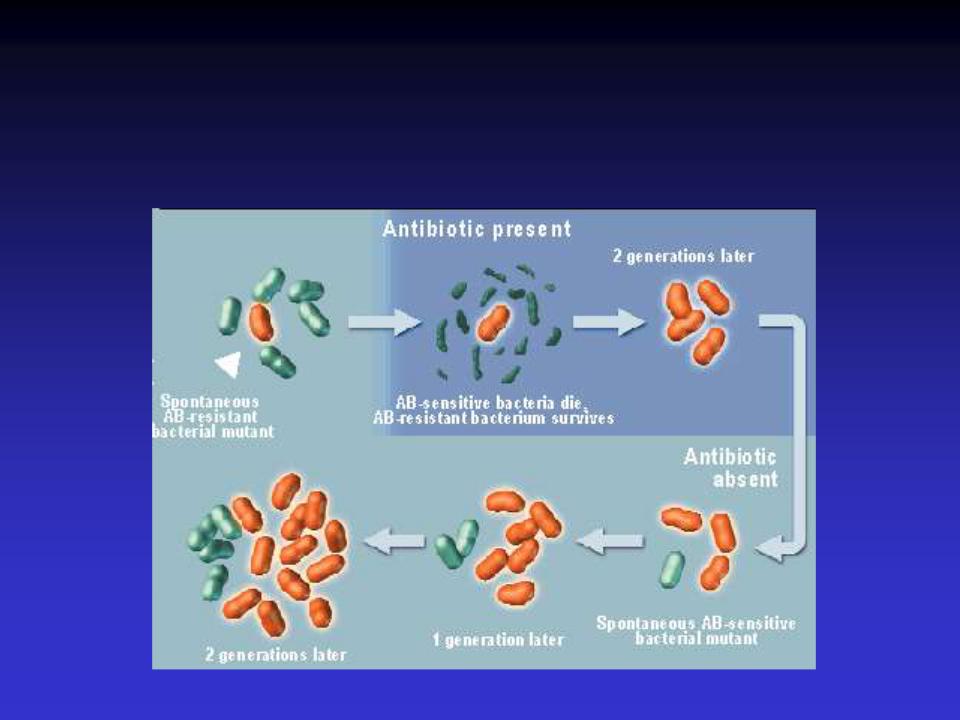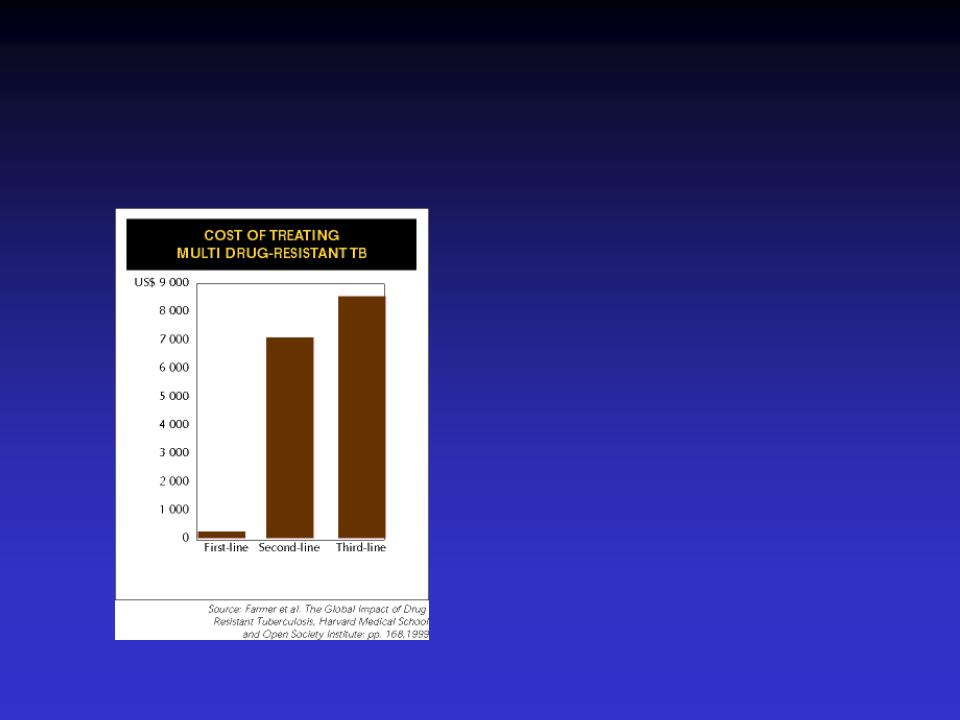
Antibiotics
.pdf
The patient suffering from a chronic kidney infection caused by a gram-negative bacterium, was treated with streptomycin, The red Iine records the antibiotic resistance of the bacterial population. Until about the fourth day. essentially all of the bacterial population is sensitive to the antibiotic. At this time, resistant mutants that require 50,000 of antibiotic (a very high amount) to control them appear, and their numbers increase rapidly. The black line records the bacterial population in the patient. After antibiotic therapy is begun, the population declines until the fourth day. At this time, mutants in the population that are resistant to streptomycin appear. The bacterial population in the patient rises as these resistant mutants replace the sensitive population,

Antimicrobial Resistance
•Relative or complete lack of effect of antimicrobial against a previously susceptible microbe
•Increase in MIC

Antibiotic Selection for
Resistant Bacteria

What Factors Promote
Antimicrobial Resistance?
•Exposure to sub-optimal levels of antimicrobial therapy
•Exposure to microbes carrying resistance genes

Inappropriate Antimicrobial
Use
•Prescription not taken correctly
•Antibiotics for viral infections
•Antibiotics sold without medical supervision
•Spread of resistant microbes in hospitals due to lack of hygiene

Inappropriate Antimicrobial
Use
•Lack of quality control in manufacture or outdated antimicrobial
•Inadequate surveillance or defective susceptibility assays
•Poverty or war
•Use of antibiotics in foods

Consequences of
Antimicrobial Resistance
• Infections resistant to available antibiotics
• Increased cost of treatment

MRSA “mer-sah”
•Methicillin-Resistant
Staphylococcus aureus
•Most frequent nosocomial (hospital-acquired) pathogen
•Usually resistant to several other antibiotics

Proposals to Combat Antimicrobial Resistance
•Speed development of new antibiotics
•Track resistance data nationwide
•Restrict antimicrobial use
•Direct observed dosing (TB)
•Use more narrow spectrum antibiotics
•Use antimicrobial cocktails

The Future of
Chemotherapeutic Agents
•Microorganisms are not the only organisms that produce antimicrobial substances. Essential to the innate immune system of many birds, amphibians, plants, and mammals are antimicrobial peptides that they produce. Antimicrobial peptides are, in fact
,part of the defense systems of most forms of life.
•Antimicrobial peptides
–Broad spectrum antibiotics from plants and animals
•Squalamine (sharks)
•Protegrin (pigs)
•Magainin (frogs)
